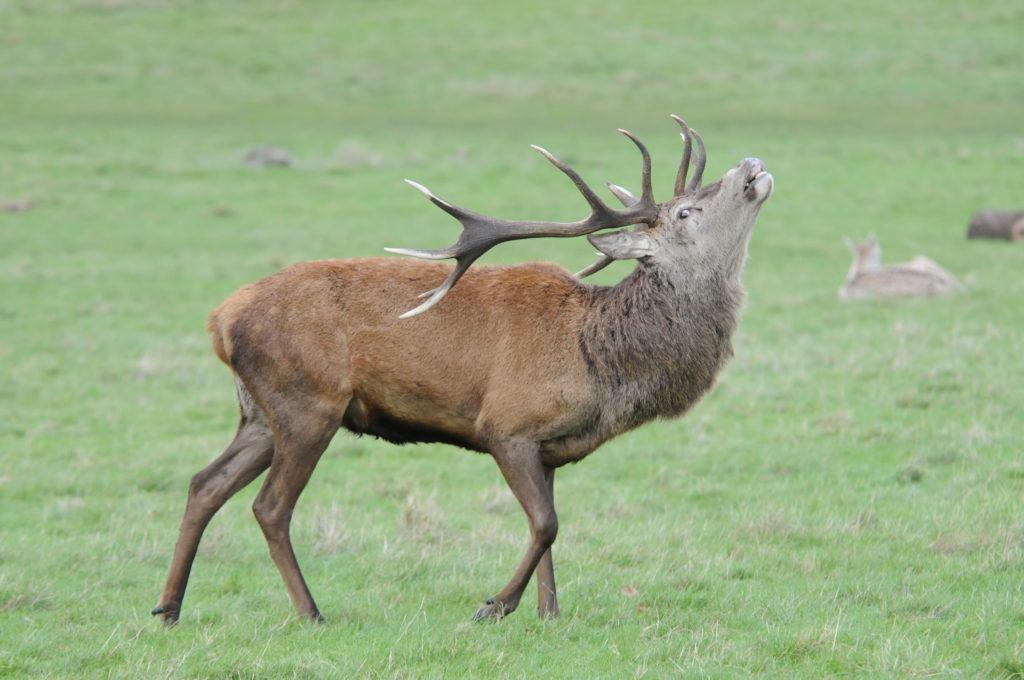The Deer Rut Safety
Deer rut safety must be thought about in the Autumn, between late September and early November, as it is the rutting season for many deer species.
Before your visit a local park to take a look for the rut, take a moment to consider the safety of yourself and everyone with you.

Deer are wild animals and those that live in deer parks are no exception. Unlike truly wild deer, which will avoid humans wherever possible, park deer are used to human presence and will tolerate it, so it may be tempting to get too close in search of a photograph or a special encounter.
Please don’t!
Even park deer, which are very used to humans, are wild animals and during the rut, the stags and bucks have sharp and dangerous antlers and are likely to demonstrate aggressive behaviour.
Rutting stags, in particular, are often pumped up with testosterone, and you could be putting yourself at risk. There have been a number of cases where visitors to parks have suffered injuries which might have been avoided.
Simple suggestions to help you enjoy watching the deer without interfering with the rut or placing yourself in potential danger:
Keep your distance!
Do not approach any deer to within closer than 50m, and stay at least 100m from rutting deer.
Be inconspicuous !
Use binoculars for close up viewing.
Pay special attention…..
Read any signs put up by the park authorities and follow their advice.
Escape route….
If there are a large number of people present, do not surround the deer as it may make them nervous. Always leave them an open line of retreat if they need it.
Privacy….
Take special care not to intrude on rutting male deer (particularly red stags or fallow bucks) which may be fighting, roaring, displaying or otherwise defending their hinds. They may see you as another intruder who needs to be repelled.
Leave your dog at home…
If you have a dog, it is best to leave it at home when the park deer are rutting or at times when recently born calves may be present, usually during the spring and early summer. If you have your dog with you, keep it on a lead and under close control.
In the event of an attack…
In the unlikely event that you are threatened or attacked, try to put a barrier such a vehicle or substantial tree between yourself and the deer. If you can, climb a tree to get out of reach. If you have a dog with you, let it run free – it will be more capable of escaping when unrestrained, and may actually be the reason that the deer has become agitated in the first place.
Danger signs…
If a deer starts walking parallel to you and glancing at you out of the corner of its eye (see picture), it is a sign that it may be considering you as a threat – move away immediately.
More Danger Signs…
If you find a deer advancing towards you or acting in a threatening manner, do not shout or wave at it. Back off slowly if possible; the deer may be satisfied that you have left its personal zone. Do not run, though, as this may trigger the animal into chasing you. Do not roll into a ball where you are; this may increase the risk of attack.
Deer are iconic creatures – our largest land mammals. Under normal circumstances, all deer will try to avoid human proximity. Do enjoy watching them but please remember to give them space to behave normally and naturally. Follow these simple guidelines and you will be able to enjoy watching them in safety.
Thank you to the British Deer Society for letting us use this article.


2 Responses
I found this article very informative, it will make me think twice when visiting park land deer. Thank you Millbank for sharing and raising awareness.
Thank you for reading it. The British Deer Society are always impressing on the dangers of deer.